Proteases
Proteases is a general term for a class of enzymes that hydrolyze protein peptide chains. According to the way they degrade polypeptides, they are divided into two categories: endopeptidases and telopeptidases. The former can cut the large molecular weight polypeptide chain from the middle to form prions and peptones with smaller molecular weights; the latter can be divided into carboxypeptidase and aminopeptidase, which respectively remove the peptide from the free carboxyl terminus or free amino terminus of the polypeptide one by one. Chain hydrolysis produces amino acids.
A general term for a class of enzymes that hydrolyze peptide bonds in proteins. According to the way they hydrolyze polypeptides, they can be divided into endopeptidases and exopeptidases. Endopeptidase cleaves the interior of the protein molecule to form smaller molecular weight peptones and peptones. Exopeptidase hydrolyzes peptide bonds one by one from the end of the free amino group or carboxyl group of protein molecules, and frees amino acids, the former is aminopeptidase and the latter is carboxypeptidase. Proteases can be classified into serine proteases, sulfhydryl proteases, metalloproteases and aspartic proteases according to their active centers and optimum pH. According to the optimum pH value of its reaction, it is divided into acidic protease, neutral protease and alkaline protease. The proteases used in industrial production are mainly endopeptidases.
Proteases are widely found in animal offal, plant stems and leaves, fruits and microorganisms. Microbial proteases are mainly produced by molds and bacteria, followed by yeast and actinomycetes.
Enzymes that catalyze the hydrolysis of proteins. There are many kinds, the important ones are pepsin, trypsin, cathepsin, papain and subtilisin. Proteases have strict selectivity for the reaction substrates they act on. A protease can only act on certain peptide bonds in protein molecules, such as the peptide bonds formed by the hydrolysis of basic amino acids catalyzed by trypsin. Proteases are widely distributed, mainly in the digestive tract of humans and animals, and are abundant in plants and microorganisms. Due to limited animal and plant resources, the industrial production of protease preparations is mainly prepared by fermentation of microorganisms such as Bacillus subtilis and Aspergillus terrestris.
Targets for Proteases
- Caspase(114)
- Aminopeptidase(24)
- ACE(74)
- Calpains(20)
- Carboxypeptidase(10)
- Cathepsin(81)
- DPP-4(31)
- Elastase(26)
- Gamma Secretase(67)
- HCV Protease(59)
- HSP(113)
- HIV Integrase(37)
- HIV Protease(47)
- MMP(228)
- NS3/4a protease(8)
- Serine Protease(18)
- Thrombin(58)
- Urokinase(4)
- Cysteine Protease(0)
- Other Proteases(18)
- Tyrosinases(47)
- 15-PGDH(1)
- Acetyl-CoA Carboxylase(13)
- Acyltransferase(59)
- Aldehyde Dehydrogenase (ALDH)(28)
- Aminoacyl-tRNA Synthetase(9)
- ATGL(1)
- Dipeptidyl Peptidase(56)
- Drug Metabolite(457)
- E1/E2/E3 Enzyme(90)
- Endogenous Metabolite(1636)
- FABP(30)
- Farnesyl Transferase(23)
- Glutaminase(14)
- Glutathione Peroxidase(14)
- Isocitrate Dehydrogenase (IDH)(28)
- Lactate Dehydrogenase(17)
- Lipoxygenase(234)
- Mitochondrial Metabolism(207)
- NEDD8-activating Enzyme(7)
- Neprilysin(12)
- PAI-1(13)
- Ser/Thr Protease(41)
- Tryptophan Hydroxylase(13)
- Xanthine Oxidase(18)
- MALT1(10)
- PCSK9(1)
Products for Proteases
- Cat.No. Nom du produit Informations
-
GC31611
2-Phenylpropionic acid
L'acide 2-phénylpropionique est un intermédiaire du métabolisme de l'alpha-méthylstyrène.
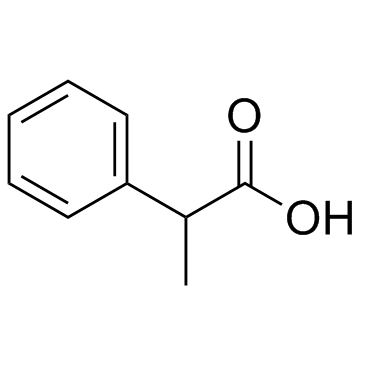
-
GC35095
2-Phospho-L-ascorbic acid trisodium salt
Le sel trisodique de l'acide 2-phospho-L-ascorbique (acide 2-phospho-L-ascorbique trisodique) est un dérivé de la vitamine C À action prolongée qui peut stimuler la formation et l'expression du collagène.
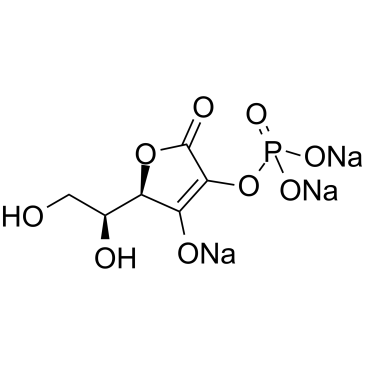
-
GC60486
2-Piperidone
La 2-pipéridone est un métabolite endogène.

-
GC19539
2-Pyrrolidinone
2-Pyrrolidinone
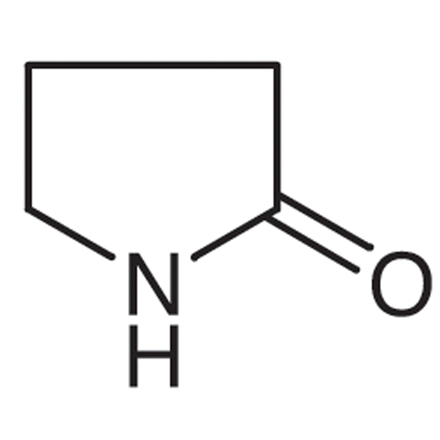
-
GC42193
2-Thenoyltrifluoroacetone
La 2-thénoyltrifluoroacétone est un agent chélateur.
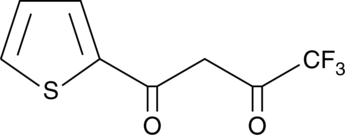
-
GC60487
2-Thiophenecarboxaldehyde

-
GC42082
20-carboxy Leukotriene B4
20-carboxy LTB4 is a metabolite of LTB4 in human neutrophils.

-
GC35075
20-HETE
Un standard analytique quantitatif garanti pour répondre aux spécifications d'identité, de pureté, de stabilité et de concentration MaxSpec®.
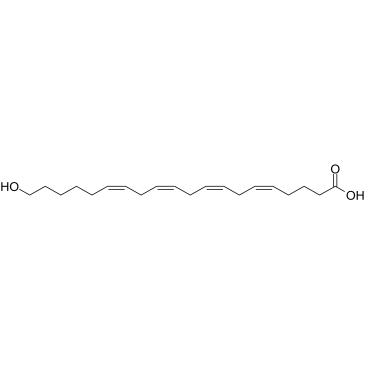
-
GC41421
20-hydroxy Leukotriene B4
20-hydroxy LTB4 is a metabolite of LTB4 in human neutrophils.

-
GC40968
21-hydroxy Eplerenone
21-hydroxy Eplerenone is a major metabolite of the mineralocorticoid receptor antagonist eplerenone.
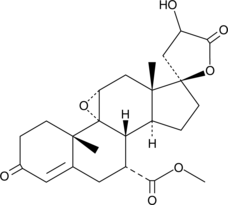
-
GC33798
21-Hydroxypregnenolone
La 21-hydroxypregnenolone est un intermédiaire essentiel dans la synthèse de la corticostérone.
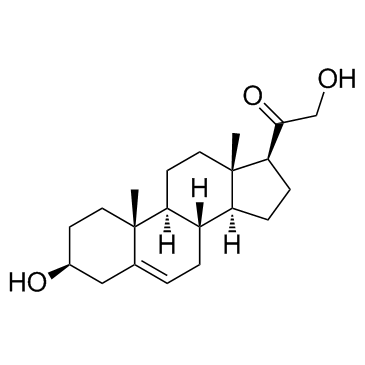
-
GC62767
23,25-Dihydroxy-24-oxovitamin D3
La 23,25-dihydroxy-24-oxovitamine D3 est un métabolite majeur de la 24(R),25-dihydroxyvitamine D3.
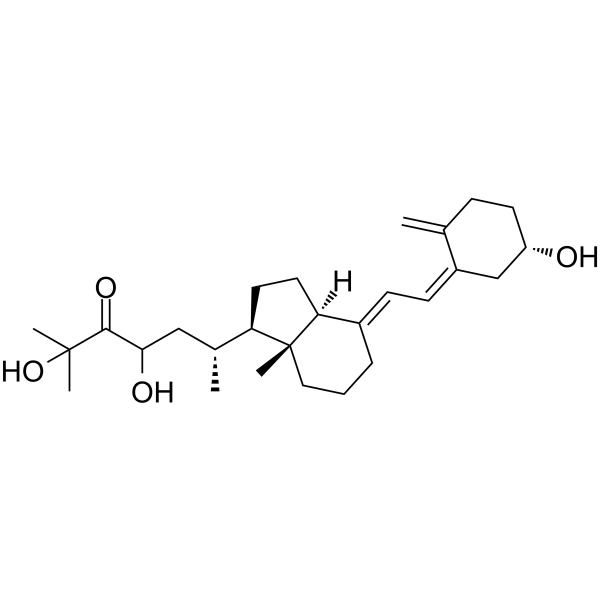
-
GC35079
24, 25-Dihydroxy VD2
Le 24, 25-dihydroxy VD2 est un métabolite hydroxylé de la vitamine D2 ; un analogue synthétique de la vitamine D.
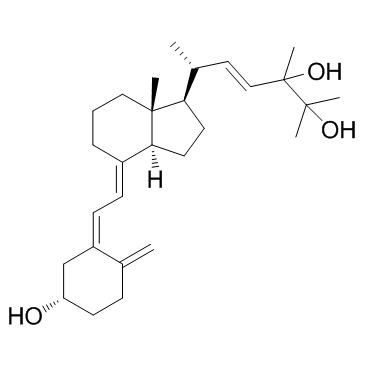
-
GC17566
24, 25-Dihydroxy VD3

-
GC13887
25(R)-27-hydroxy Cholesterol
Le 25(R)-27-hydroxy-cholestérol est un modulateur sélectif des récepteurs aux œstrogènes et un agoniste du récepteur X du foie.
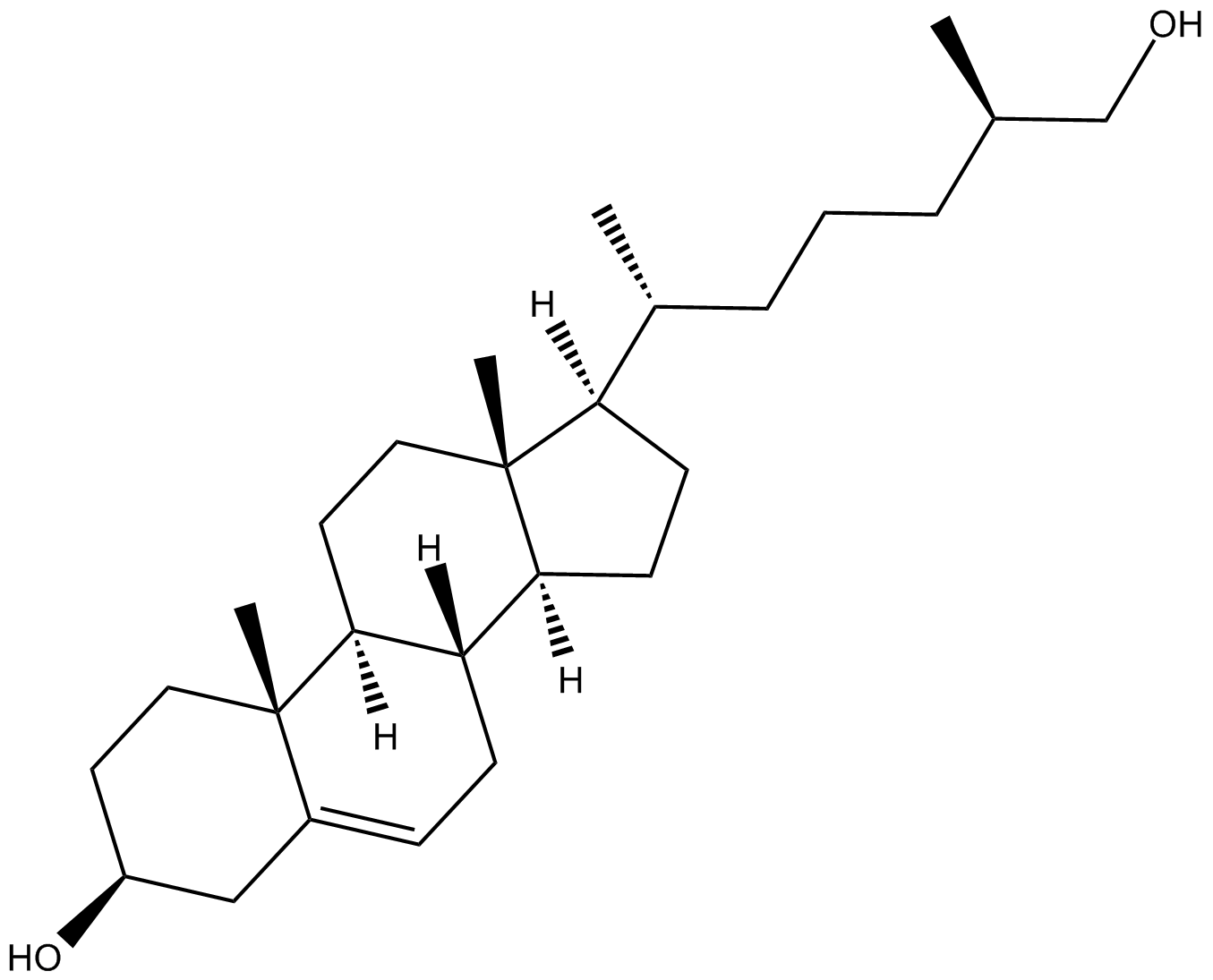
-
GC35081
25,26-Dihydroxyvitamin D3
La 25,26-dihydroxyvitamine D3 (25,26-dihydroxycholécalciférol) est un métabolite de la vitamine D3 ayant une activité de transport intestinal du calcium.
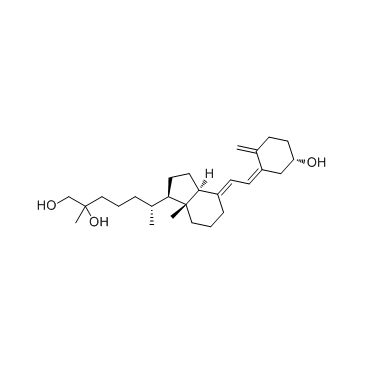
-
GC49365
25-Desacetyl Rifampicin
A major active metabolite of rifampicin
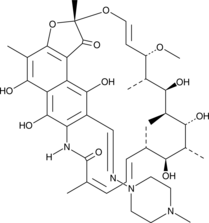
-
GC33860
25-Hydroxycholesterol
Le 25-hydroxycholestérol est un métabolite du cholestérol qui est produit et sécrété par les macrophages en réponse À l'activation du récepteur de type Toll (TLR).
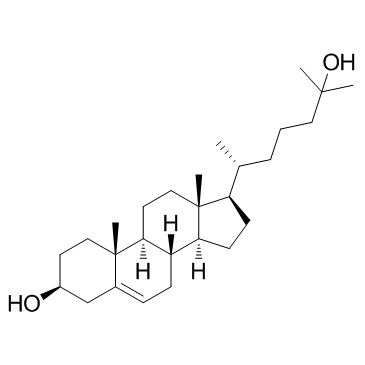
-
GC64985
3'-O-Methylguanosine
3'-O-Méthylguanosine est un analogue de nucléoside méthylé et un terminateur de chaîne d'ARN.
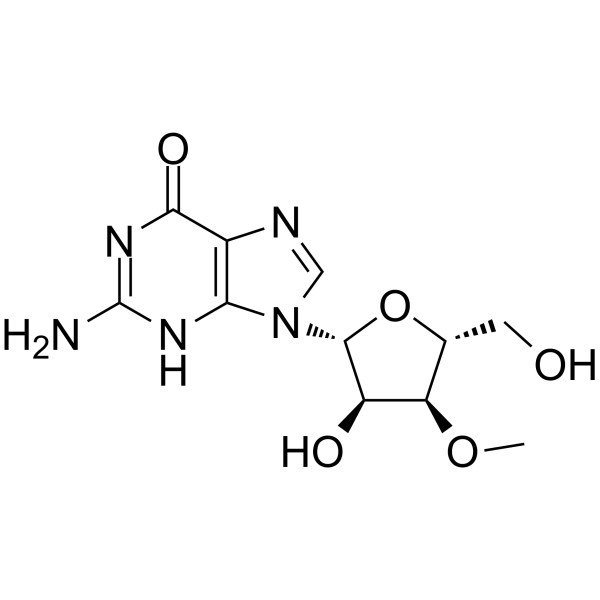
-
GC60493
3',4'-Dihydroxyacetophenone
La 3',4'-dihydroxyacétophénone (3,4-DHAP), isolée des aiguilles de Picea Schrenkiana, présente une forte action suppressive contre l'activité de la tyrosinase, avec une IC50 de 10 μM. La 3',4'-dihydroxyacétophénone (3,4-DHAP) est un agent vasoactif et antioxydant.

-
GC60023
3'-Deoxyuridine-5'-triphosphate
Le 3'-désoxyuridine-5'-triphosphate (3'-dUTP) est un analogue nucléotidique qui inhibe les ARN polymérases I et II dépendantes de l'ADN.
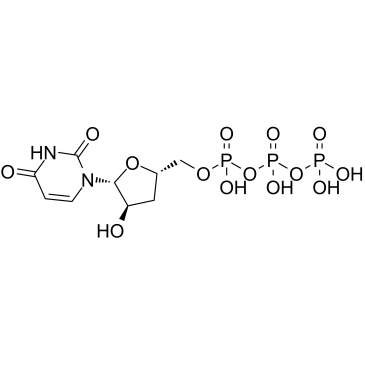
-
GC61862
3'-Deoxyuridine-5'-triphosphate trisodium
Le 3'-désoxyuridine-5'-triphosphate trisodique (3'-dUTP trisodique) est un analogue nucléotidique qui inhibe les ARN polymérases I et II dépendantes de l'ADN.
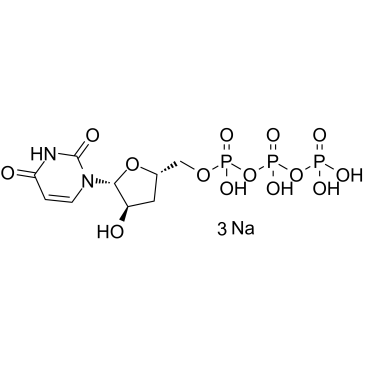
-
GC41480
3'-hydroxy Lidocaine
3'-hydroxy Lidocaine is an active metabolite of lidocaine formed by the cytochrome P450 (CYP) isoforms CYP1A2 and CYP3A4.

-
GC39611
3'-Hydroxy Repaglinide
Le 3'-hydroxyrépaglinide est l'un des principaux métabolites CYP2C8 du répaglinide.
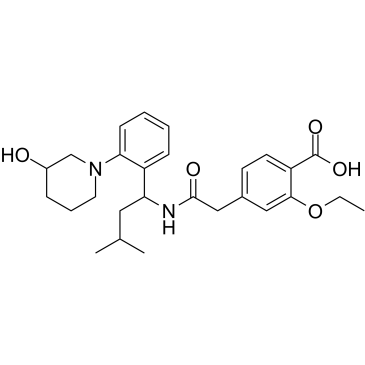
-
GC60500
3'-Hydroxy Repaglinide D5
Le 3'-hydroxy répaglinide D5 est le 3'-hydroxy répaglinide marqué au deutérium.
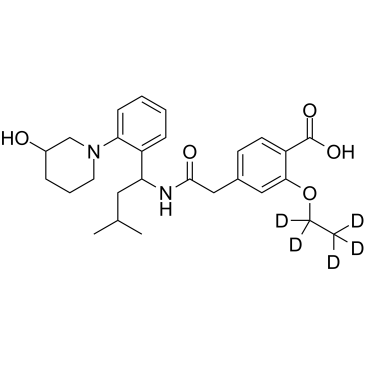
-
GC42201
3,3'-Diiodo-L-thyronine
La 3,3'-Diiodo-L-thyronine (3,3'-T2) est un métabolite endogène de l'hormone thyroÏdienne.
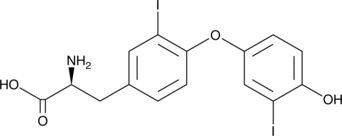
-
GC60491
3,3-Dimethylglutaric acid
L'acide 3,3-diméthylglutarique, membre des acides gras À ramification méthyle, est un métabolite endogène parfois présent dans l'urine humaine.
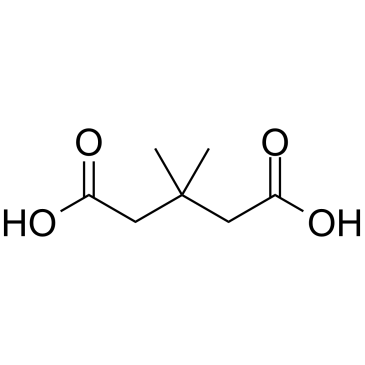
-
GC33703
3,4,5-Trimethoxycinnamic acid
L'acide 3,4,5-triméthoxycinnamique est un phénylpropanoÏde isolé des racines de Polygala tenuifoliaWILLD, avec effet anti-stress, prolongeant le temps de sommeil chez les animaux.
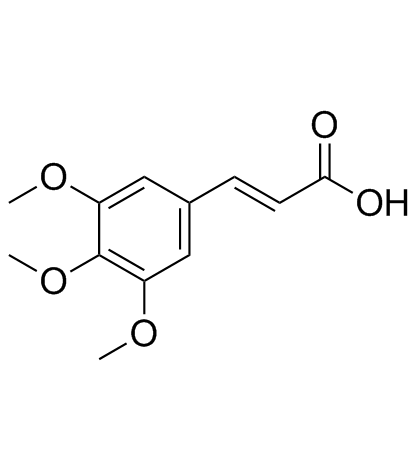
-
GC68082
3,4,5-Trimethoxyphenylacetic acid

-
GC39841
3,4-Dehydro Cilostazol
Le 3,4-déhydro cilostazol (OPC-13015) est un métabolite actif du cilostazol.
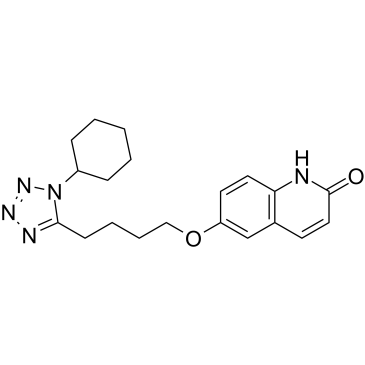
-
GC33649
3,4-Dihydroxybenzeneacetic acid
L'acide 3,4-dihydroxybenzèneacétique est le principal métabolite neuronal de la dopamine.
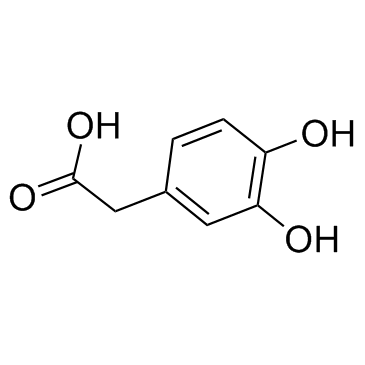
-
GC30146
3,4-Dihydroxymandelic acid
L'acide 3,4-dihydroxymandélique est un métabolite de la noradrénaline.
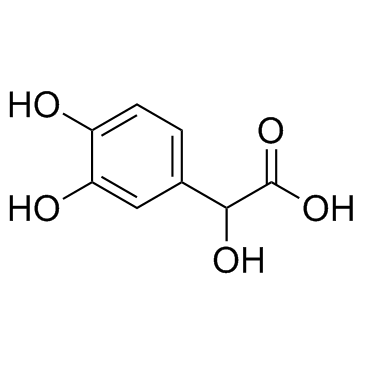
-
GC39777
3,4-Dimethoxyphenethylamine
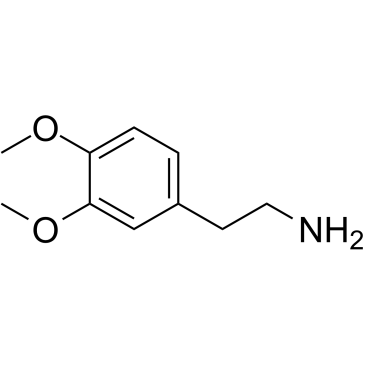
-
GC39327
3,4-Dimethoxyphenol
Le 3,4-diméthoxyphénol est un composé phénylpropanoÏde d'origine végétale et peut être utilisé comme agent blanchissant dans les cosmétiques.
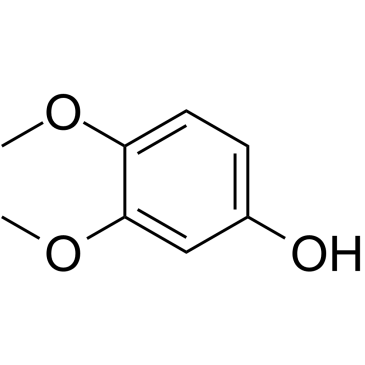
-
GC33615
3,4-Dimethoxyphenylacetic acid
L'acide 3,4-diméthoxyphénylacétique est un élément constitutif de la synthèse chimique.
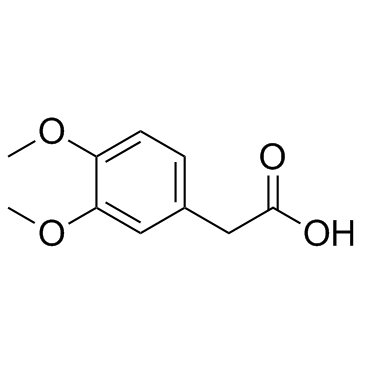
-
GC60497
3,5-Dihydroxyacetophenone
La 3,5-dihydroxyacétophénone est un métabolite endogène.
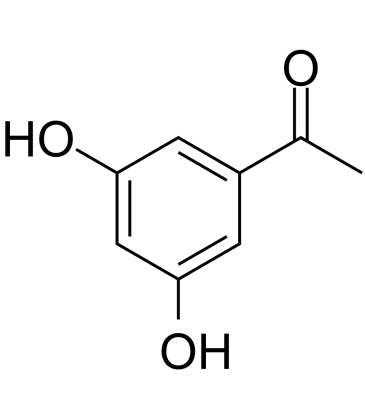
-
GC33817
3,5-Dihydroxybenzoic acid
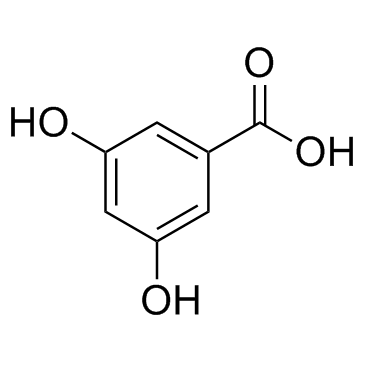
-
GC61716
3,5-Dimethylbenzaldehyde
Le 3,5-diméthylbenzaldéhyde est un élément constitutif de la synthèse chimique.
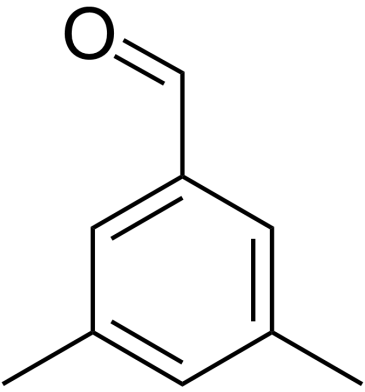
-
GC62788
3-(2,4-Dihydroxyphenyl)propanoic acid
L'acide 3-(2,4-dihydroxyphényl)propanoÏque (DPPacid) est un inhibiteur puissant et compétitif de la tyrosinase, inhibe la L-Tyrosine et la DL-DOPA avec une IC50 et un Ki de 3,02 μM et 11,5 μM, respectivement .
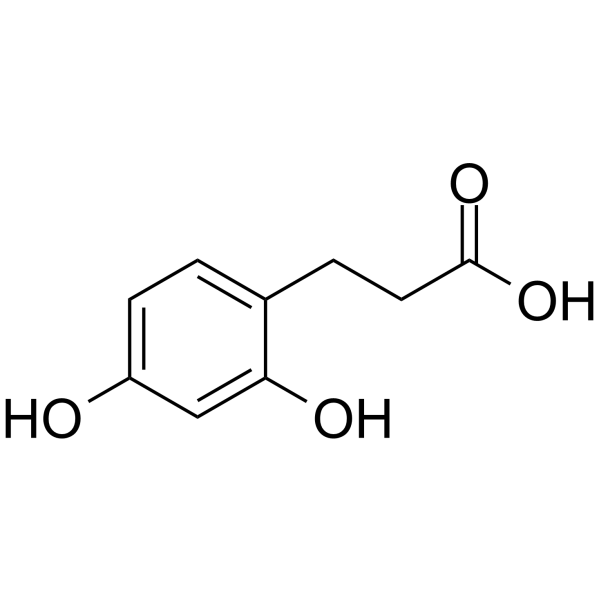
-
GC62789
3-(2-Hydroxyphenyl)propanoic acid
L'acide 3-(2-hydroxyphényl)propanoÏque est un métabolite endogène.
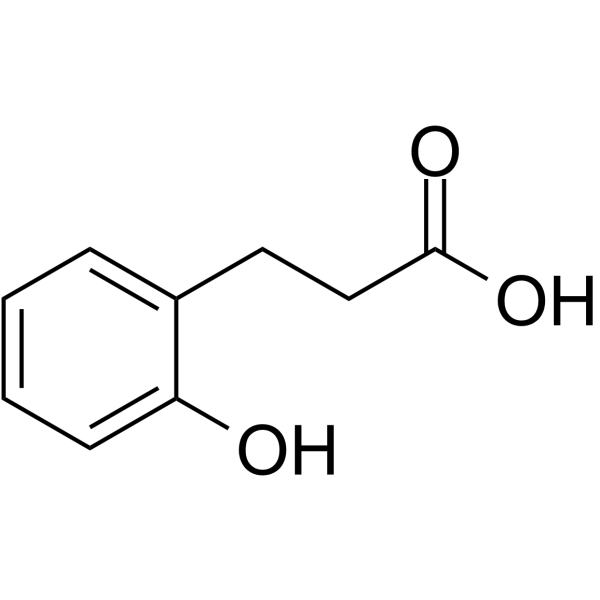
-
GC33618
3-(3,4,5-Trimethoxyphenyl)propanoic acid
L'acide 3-(3,4,5-triméthoxyphényl)propanoÏque se trouve dans les herbes et les épices.
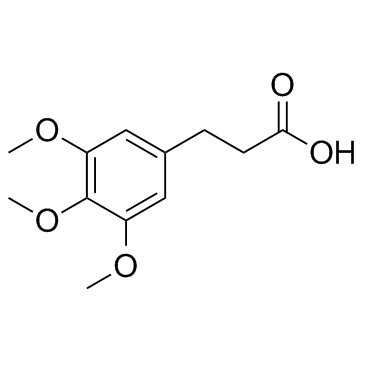
-
GC60488
3-(3-Hydroxyphenyl)propionic acid
L'acide 3-(3-hydroxyphényl)propionique est un métabolite flavonoÏde formé par la microflore humaine.

-
GC52324
3-(3-Hydroxyphenyl)propionic Acid sulfate
A metabolite of certain phenols and glycosides

-
GC31625
3-(3-Methoxyphenyl)propionic acid
L'acide 3-(3-méthoxyphényl)propionique est un acide organique, métabolite humain naturel et excrété dans l'urine humaine.
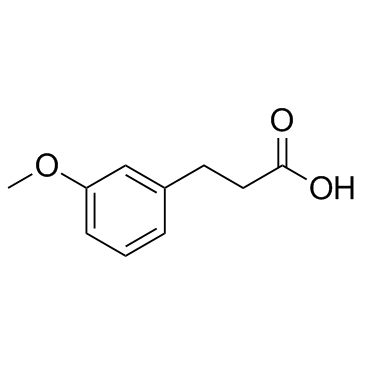
-
GC42198
3-(4-Chlorophenyl)-4-hydroxybutyric Acid (sodium salt)
An inactive metabolite of baclofen
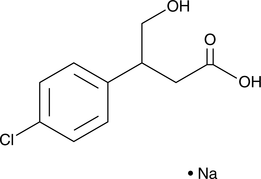
-
GC32943
3-(Methylthio)propionic acid (3-Methylsulfanylpropionic acid)
L'acide 3-(méthylthio)propionique (acide 3-méthylsulfanylpropionique) est un intermédiaire du métabolisme de la méthionine.
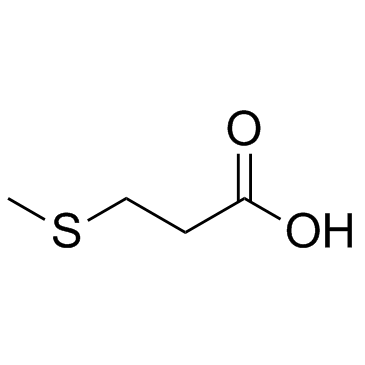
-
GC46583
3-Amino-2,6-Piperidinedione
An active metabolite of (±)-thalidomide
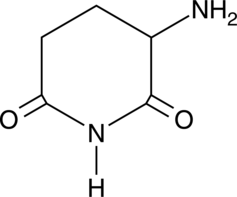
-
GC31569
3-Amino-2-methylpropanoic acid
L'acide 3-amino-2-méthylpropanoÏque pourrait induire un brunissement de la graisse blanche et une β-oxydation hépatique et est inversement corrélé aux facteurs de risque cardiométabolique.
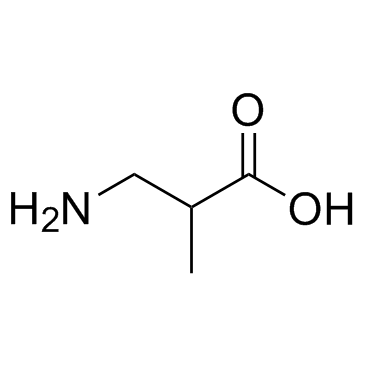
-
GC62793
3-Amino-2-oxazolidinone
La 3-amino-2-oxazolidinone (AOZ) est le métabolite de la furazolidone.

-
GC67902
3-Amino-2-oxazolidinone-d4

-
GC39688
3-Amino-2-piperidinone
La 3-aminopipéridine-2-one est un métabolite de tous les organismes vivants.
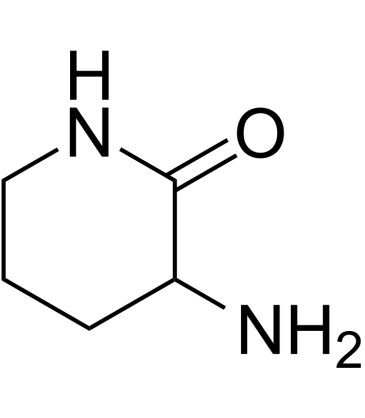
-
GC38293
3-Amino-4-hydroxybenzoic acid
L'acide 3-amino-4-hydroxybenzoÏque est un métabolite endogène.
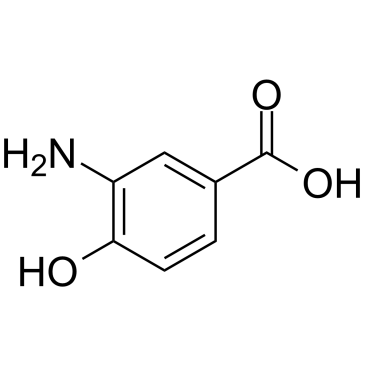
-
GC30719
3-Amino-4-methylpentanoic acid
L'acide 3-amino-4-méthylpentanoÏque est un acide aminé bêta et un isomère de position de la L-leucine qui est produit naturellement chez l'homme via le métabolisme de la L-leucine par l'enzyme leucine 2,3-aminomutase.

-
GC49849
3-Aminosalicylic Acid
A salicylic acid derivative
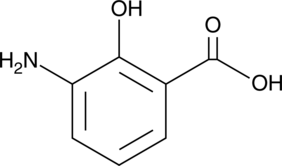
-
GC33631
3-Chloro-L-tyrosine
La 3-chloro-L-tyrosine est un marqueur spécifique de l'oxydation catalysée par la myéloperoxydase et est nettement élevée dans les lipoprotéines de basse densité isolées de l'intima athéroscléreuse humaine.
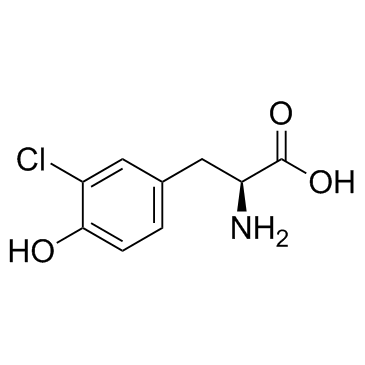
-
GC35106
3-Dehydrotrametenolic acid
L'acide 3-déhydrotraméténolique, isolé du sclérote de Poria cocos, est un inhibiteur de la lactate déshydrogénase (LDH). L'acide 3-déhydrotraméténolique favorise la différenciation adipocytaire in vitro et agit comme un sensibilisateur À l'insuline in vivo. L'acide 3-déhydrotraméténolique induit l'apoptose et possède une activité anticancéreuse.
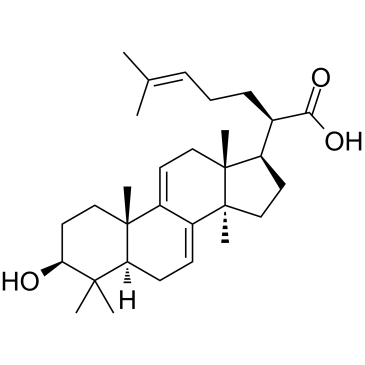
-
GC40743
3-deoxy Galactosone
La 3-désoxy galactosone est un composé 1,2-dicarbonyle issu de la dégradation du galactose.
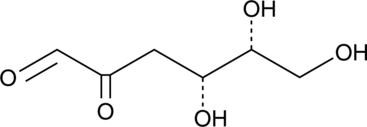
-
GC35111
3-Epiursolic Acid
L'acide 3-épiursolique est un triterpénoÏde qui peut être isolé des Myrtaceae, agit comme un inhibiteur compétitif de la cathepsine L (IC50, 6,5 μM ; Ki, 19,5 μM), sans effet évident sur la cathepsine B.

-
GC38257
3-Ethoxy-3-oxopropanoic acid
L'acide 3-éthoxy-3-oxopropanoÏque est un métabolite endogène.

-
GC38368
3-Furanoic acid
L'acide 3-furanoÏque est un métabolite endogène.

-
GC13377
3-hydroxy Anthranilic Acid
L'acide 3-hydroxy anthranilique est un métabolite du tryptophane dans la voie de la kynurénine.
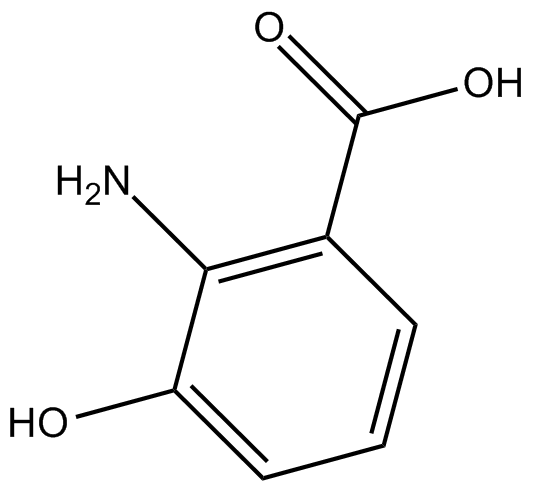
-
GC42274
3-hydroxy Darifenacin
3-hydroxy Darifenacin is a metabolite of darifenacin.
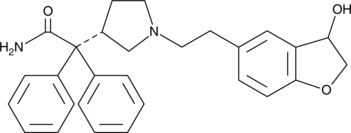
-
GC42275
3-hydroxy Desloratidine
3-hydroxy Desloratidine is a major metabolite of desloratadine , a tricyclic antagonist of the histamine H1 receptor.
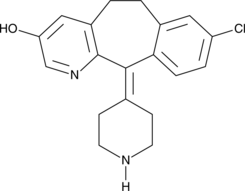
-
GC41565
3-hydroxy Medetomidine
3-hydroxy Medetomidine is a metabolite of the α2-adrenergic receptor agonist medetomidine.
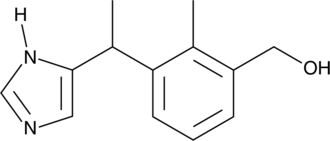
-
GC60501
3-Hydroxy-4-aminopyridine
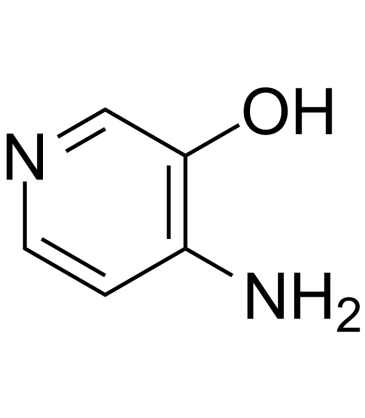
-
GC39328
3-Hydroxybenzaldehyde
Le 3-hydroxybenzaldéhydeest un composé précurseur de composés phénoliques, tels que le protocatéchualdéhyde.

-
GC38669
3-Hydroxybenzoic acid
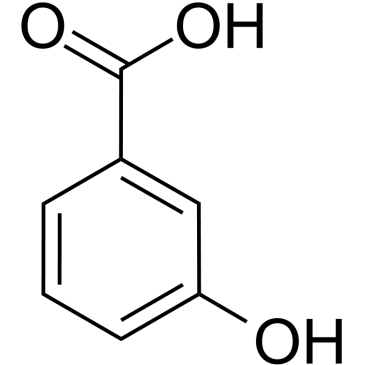
-
GC30616
3-Hydroxybutyric acid
L'acide 3-hydroxybutyrique (acide β-hydroxybutyrique) est un métabolite qui est élevé dans le diabète de type I.
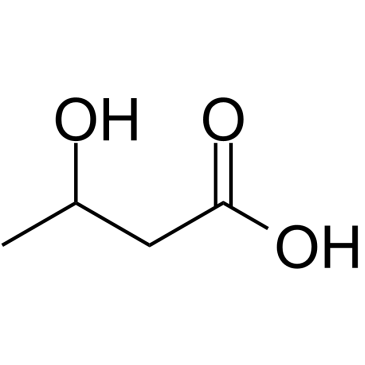
-
GC60502
3-Hydroxybutyric acid sodium
L'acide 3-hydroxybutyrique sodique (acide β-hydroxybutyrique sodique) est un métabolite qui est élevé dans le diabète de type I.
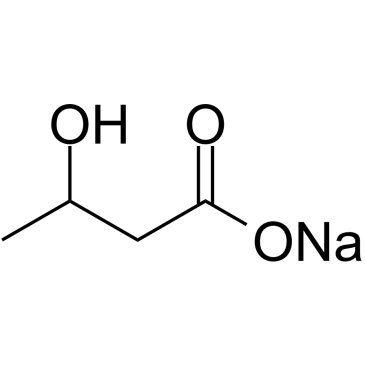
-
GC33383
3-Hydroxycapric acid
L'acide 3-hydroxycaprique est un inhibiteur de la progression mitotique.
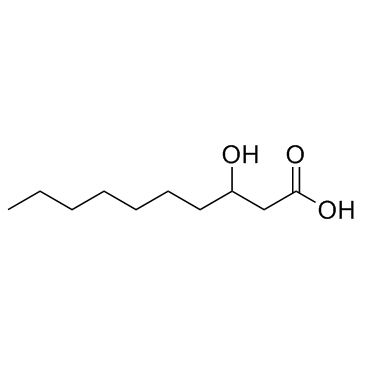
-
GC49364
3-Hydroxycoumarin
La 3-hydroxycoumarine est un inhibiteur puissant et redox de la 15-LOX-1 humaine.
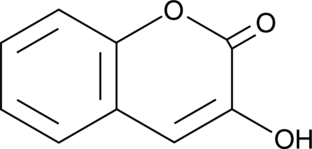
-
GC30642
3-Hydroxydodecanoic acid
L'acide 3-hydroxydodécanoÏque est un acide gras À chaÎne moyenne associé À des troubles métaboliques des acides gras.
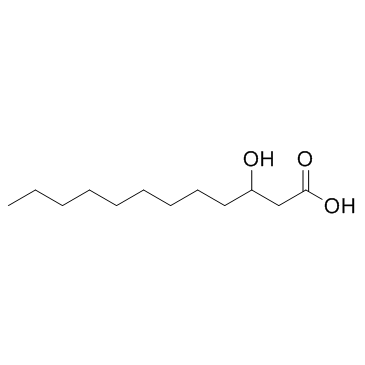
-
GC41477
3-Hydroxyglutaric Acid
L'acide 3-hydroxyglutarique est un dérivé de l'acide glutarique.

-
GC66424
3-Hydroxyglutaric acid-d5
L'acide 3-hydroxyglutarique-d5 est l'acide 3-hydroxyglutarique marqué au deutérium. L'acide 3-hydroxyglutarique est un dérivé de l'acide glutarique.
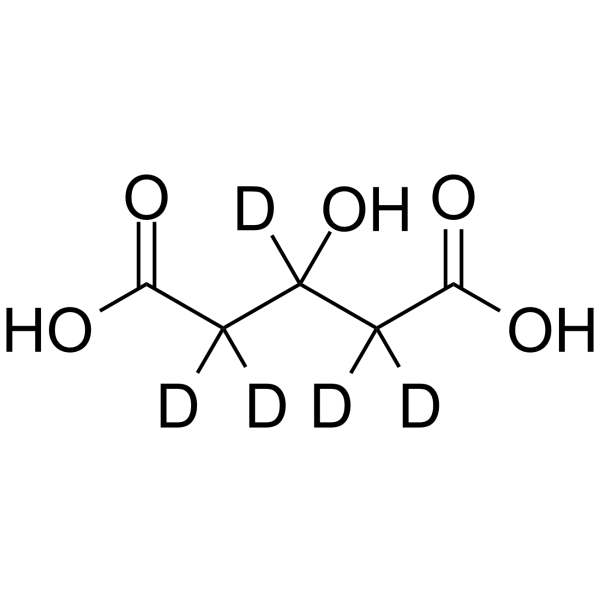
-
GC30603
3-Hydroxyhippuric acid
L'acide 3-hydroxyhippurique est un acyl glycine.
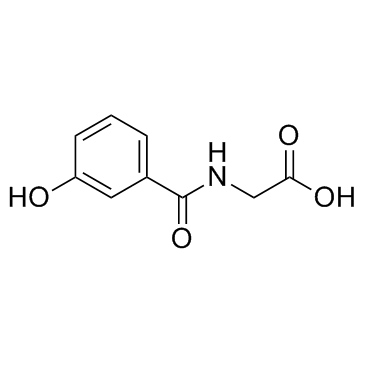
-
GC30660
3-Hydroxyisovaleric acid
L'acide 3-hydroxyisovalérique est un métabolite endogène normal excrété dans l'urine.
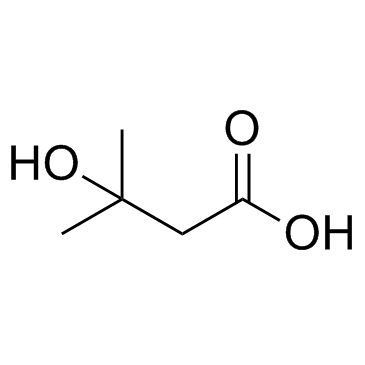
-
GC30638
3-Hydroxymandelic Acid
Acide 3-hydroxymandélique, un métabolite de la phényléphrine, la phényléphrine est un agoniste des récepteurs α.
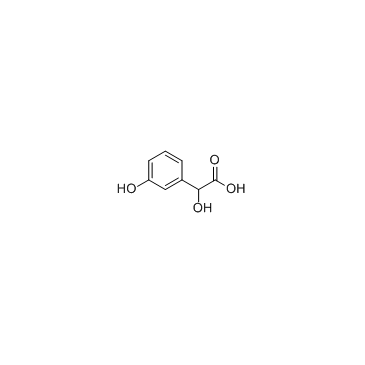
-
GC38269
3-Hydroxyphenylacetic acid
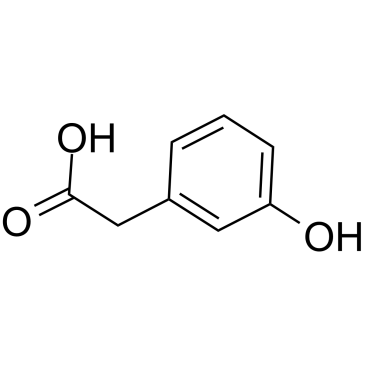
-
GC14549
3-Hydroxyphenylacetic acid
L'acide 3-hydroxyphénylacétique est un métabolite endogène.

-
GC30636
3-Hydroxypicolinic acid (Picolinic acid, 3-hydroxy- (6CI,7CI,8CI))
L'acide 3-hydroxypicolinique (acide picolinique, 3-hydroxy- (6CI,7CI,8CI)) est un dérivé de l'acide picolinique et appartient À la famille des pyridines.
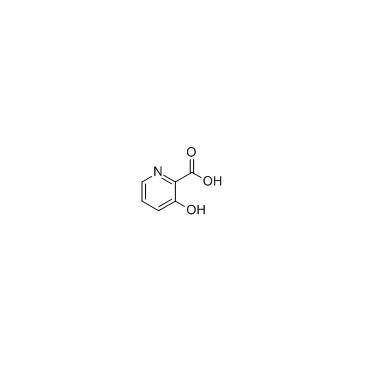
-
GC30729
3-Hydroxyvaleric acid
L'acide 3-hydroxyvalérique est un corps cétonique À 5 carbones.
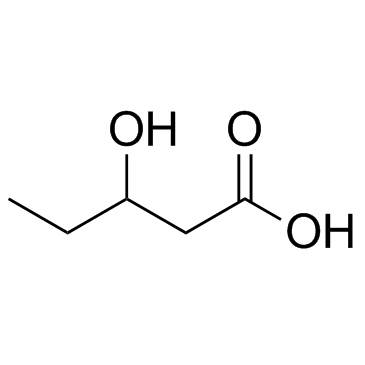
-
GC33436
3-Indoleacetic acid (Indole-3-acetic acid)
L'acide 3-indoleacétique (acide indole-3-acétique) (acide indole-3-acétique) est l'hormone de croissance végétale naturelle la plus courante de la classe des auxines.

-
GC39778
3-Indoleacetonitrile
Le 3-indoleacétonitrile est un métabolite endogène.
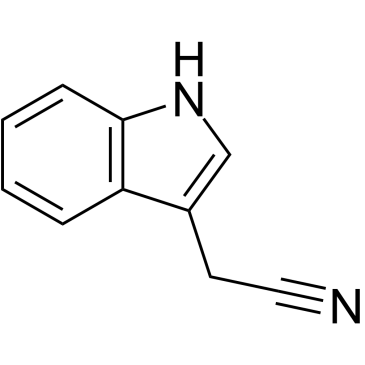
-
GC31290
3-Indolepropionic acid
L'acide 3-indolepropionique s'est avéré être un puissant antioxydant et a un potentiel dans le traitement de la maladie d'Alzheimer.
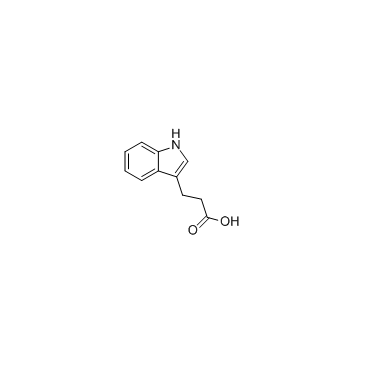
-
GC48457
3-keto Fusidic Acid
An active metabolite of fusidic acid
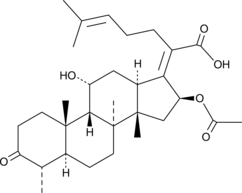
-
GC33653
3-Methoxybenzoic acid (3-Anisic acid)
L'acide 3-méthoxybenzoÏque (acide 3-anisique) peut être utilisé dans la synthèse des 3-méthoxybenzoates d'europium (III) et de gadolinium (III).
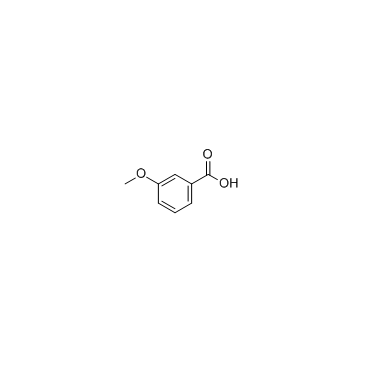
-
GC33739
3-Methoxytyramine (3-O-methyl Dopamine)
La 3-méthoxytyramine (3-O-méthyl dopamine), un métabolite extracellulaire bien connu de la 3-hydroxytyramine/dopamine, est un neuromodulateur.
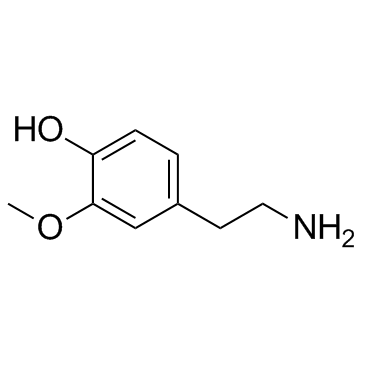
-
GC33738
3-Methoxytyramine hydrochloride (3-O-methyl Dopamine hydrochloride)
Le chlorhydrate de 3-méthoxytyramine (chlorhydrate de 3-O-méthyl dopamine) est un métabolite inactif de la dopamine qui peut activer le récepteur 1 associé aux traces d'amines (TAAR1).
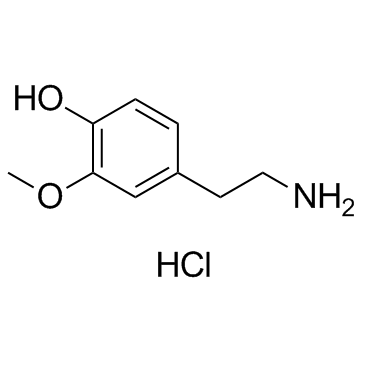
-
GC68324
3-Methoxytyramine-d4 hydrochloride

-
GC49869
3-Methoxytyrosine
An active metabolite of L-DOPA
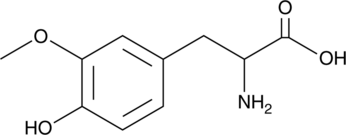
-
GC39690
3-Methyl-2-buten-1-ol
Le 3-méthyl-2-butène-1-ol est un métabolite endogène.
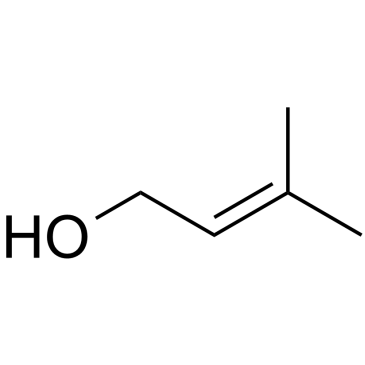
-
GC39846
3-Methyl-2-cyclopenten-1-one

-
GC19716
3-methyl-2-oxobutyrate
Le 3-méthyl-2-oxobutyrate est un précurseur de l'acide pantothénique chez Escherichia coli.

-
GC30593
3-Methyl-2-oxovaleric acid
L'acide 3-méthyl-2-oxovalérique est une neurotoxine, un acidogène et une métabotoxine, ainsi qu'un métabolite anormal qui résulte de la dégradation incomplète des acides aminés À chaÎne ramifiée.

-
GC31535
3-Methyl-L-histidine
La 3-méthyl-L-histidine est un biomarqueur de la consommation de viande, en particulier de poulet.

-
GC10710
3-Methyladenine
La 3-méthyladénine est un inhibiteur classique de l'autophagie.

-
GC31546
3-Methyladipic acid
L'acide 3-méthyladipique est le métabolite final dans la voie de l'ω-oxydation.

-
GC38360
3-Methylbut-2-enoic acid
L'acide 3-méthylbut-2-énoÏque est un métabolite endogène.

-
GC31595
3-Methylbutanoic acid
L'acide 3-méthylbutanoÏque est un acide gras naturel et connu pour avoir un effet sur la mort néonatale et sur la possibilité de vomissements jamaÏcains chez l'homme.

-
GC18628
3-Methylcrotonyl Glycine
La 3-méthylcrotonyl glycine est une acyl glycine, un métabolite normal des acides aminés présent dans l'urine.



